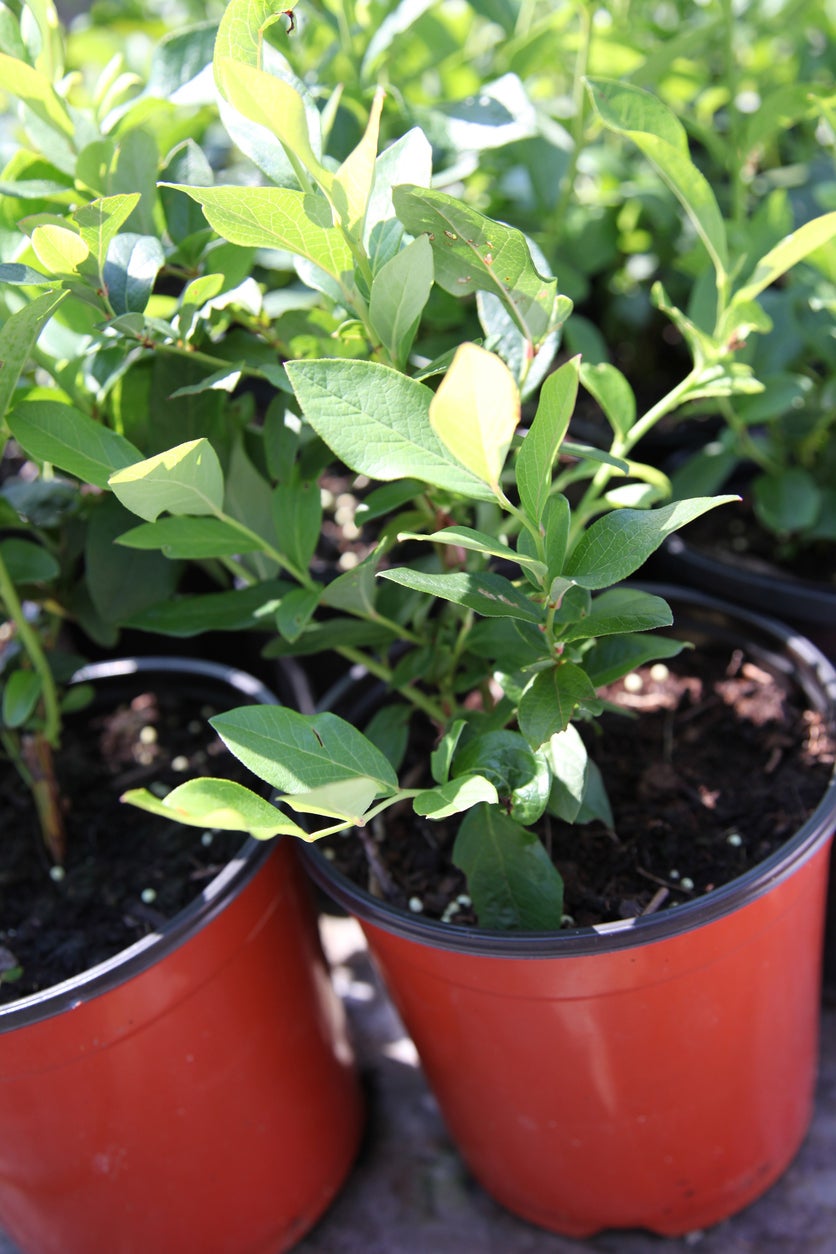Propagating Blueberries – How To Propagate Blueberry Bushes


As long as you have acidic soil, blueberry bushes are a real asset to the garden. Even if you don’t, you can grow them in containers. They’re worth having for their delicious, abundant fruit that’s always better fresh than in the store. You can buy blueberry bushes at most nurseries, but if you’re feeling brave, it’s always fun to try propagating things yourself. Keep reading to learn more about how to start a blueberry bush.
Methods for Propagating Blueberries
There are several ways to propagate blueberries. These include seed, sucker, and cutting propagation.
Seed Propagating Blueberries
Growing blueberries from seeds is possible, but it tends to be restricted to lowbush blueberry plants. Blueberry seeds are tiny, so it’s easiest to separate them from the fruit in large batches. First, freeze the blueberries for 90 days to stratify the seeds.
Then pulse the berries in a blender with plenty of water and scoop off the pulp that rises to the top. Keep doing this until you have a good number of seeds left in the water.
Sprinkle the seeds evenly in moist sphagnum moss and cover lightly. Keep the medium moist but not soaked and in a somewhat dark location until germination, which should occur within one month. At this time the seedlings can be given more light.
Once they’ve reached about 2 to 3 inches (5-8 cm.) tall, you can carefully transplant to individual pots. Water well and keep in a sunny location. Set them out in the garden after the threat of frost has passed.
Growing Blueberry Suckers
Blueberry bushes will sometimes put up new shoots several inches (8 cm.) from the base of the main plant. Carefully dig these up with roots attached. Prune back some of the stem before transplanting, or the small amount of roots won’t be able to support the plant.
Gardening tips, videos, info and more delivered right to your inbox!
Sign up for the Gardening Know How newsletter today and receive a free copy of our e-book "How to Grow Delicious Tomatoes".
Growing sucker plants from blueberries is easy. Simply pot them up in a 50/50 mix of potting soil and sphagnum peat moss, which should provide enough acidity as they form new growth. Give them plenty of water but don’t drench the plants.
Once the suckers have formed adequate new growth, they can be transplanted to the garden, or you can continue growing the plants in containers.
Growing Blueberry Bushes from Cuttings
Another very popular method of propagation is growing blueberry bushes from cuttings. Blueberries can be grown from both hard and softwood cuttings.
Hardwood cuttings – Harvest hardwood cuttings in late winter, after the bush has gone dormant. Select a healthy-looking stem that’s one year old (last year’s new growth) and cut it into 5 inch (13 cm.) lengths. Stick the cuttings in growing medium and keep them warm and moist. By spring they should have rooted and produced new growth and be ready to transplant outside.
Softwood cuttings – In early spring, select a healthy-looking shoot and cut off the last 5 inches (13 cm.) of that season’s new growth. The cuttings should be starting to get woody but still flexible. Remove all but the top two or three leaves. Never let the cuttings dry out, and plant them immediately in moist growing medium.

The only child of a horticulturist and an English teacher, Liz Baessler was destined to become a gardening editor. She has been with Gardening Know how since 2015, and a Senior Editor since 2020. She holds a BA in English from Brandeis University and an MA in English from the University of Geneva, Switzerland. After years of gardening in containers and community garden plots, she finally has a backyard of her own, which she is systematically filling with vegetables and flowers.
-
 Looking For Plants To Give You The Soft And Fuzzies? Try These 5 Fuzzy Leaf Plant Options
Looking For Plants To Give You The Soft And Fuzzies? Try These 5 Fuzzy Leaf Plant OptionsLovers of texture, drama, silver foliage and tactile plants will adore these special sensory garden additions. These fuzzy leaf plant options will leave you all aglow
By Susan Albert
-
 Get Ready For A Summer Of Hummers! Grow These Full Sun Hummingbird Plants and Flowers
Get Ready For A Summer Of Hummers! Grow These Full Sun Hummingbird Plants and FlowersIf you’re lucky enough to enjoy a sunny backyard, make sure you are maxing out on your pollinator opportunities and grow these full sun hummingbird plants and flowers
By Tonya Barnett